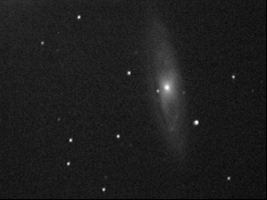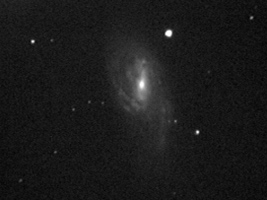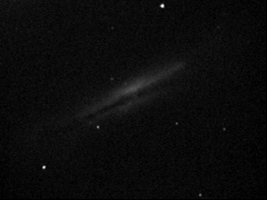Leo Triplet (M 65, M 66, NGC 3628)

History
The galaxies M 65 and M 66 were discovered by Charles Messier on 1 March 1780. He noted on M 65: «Nebula discovered in the Lion; It is very weak and does not contain a star.» And to M 66: «Nebula discovered in the lion; very weak light & very close to the previous one [M 65]: Both appear in the same field of the telescope. The comet observed in 1773 and 1774 passed between these two nebulae from November 1st to 2nd, 1773. M. Messier undoubtedly did not see them then because of the light of the comet.» Many attribute the discovery of the galaxies to Messier's friend Pierre Méchain, but since Messier usually explicitly mentions Méchain discoveries, but not here, it really seems Messier to be the discoverer. [4, 196, 217, 281]
NGC 3628, the fainter third galaxy of the Leo triplet, was only discovered by William Herschel on 8 April 1784, when he observed Messier's discoveries. [196, 217]
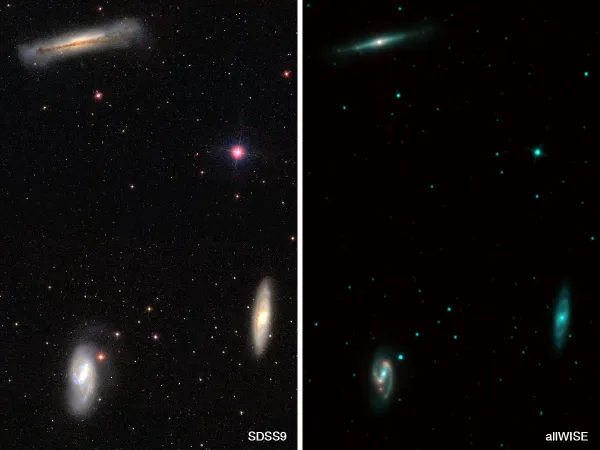
Halton Arp, who examined the photographic plates of the «Palomar Observatory Sky Survey» (POSS) for strange galaxies, lists M 66 as Arp 16 and the entire Leo triplet as Arp 317 in his 1966 «Atlas of Peculiar Galaxies» also the designations APG 16 and APG 317. [199]
Physical Properties
The three galaxies M 65, M 66 and NGC 3628 show gravitational interactions with one another, which mainly influenced the appearance of M 66. The dusty spiral arms are slightly asymmetrical and contain many clusters of bright stars. A weak spiral arm on the north side seems to have already detached itself, which can be seen particularly well in the illustration of the «Sloan Digitized Sky Survey» in Fig. 2. At NGC 3628 we are looking exactly on the edge at a dense band of dust. [196]
The heliocentric speeds of the three galaxies, measured by spectral redshift, range from around 700 km/s to 850 km/s. The distances of the galaxy group determined with different methods (redshift, Cepheids, Tully-Fischer relation) amount to about 7.3 Mpc to 14.6 Mpc (24 to 48 million light years). [145]

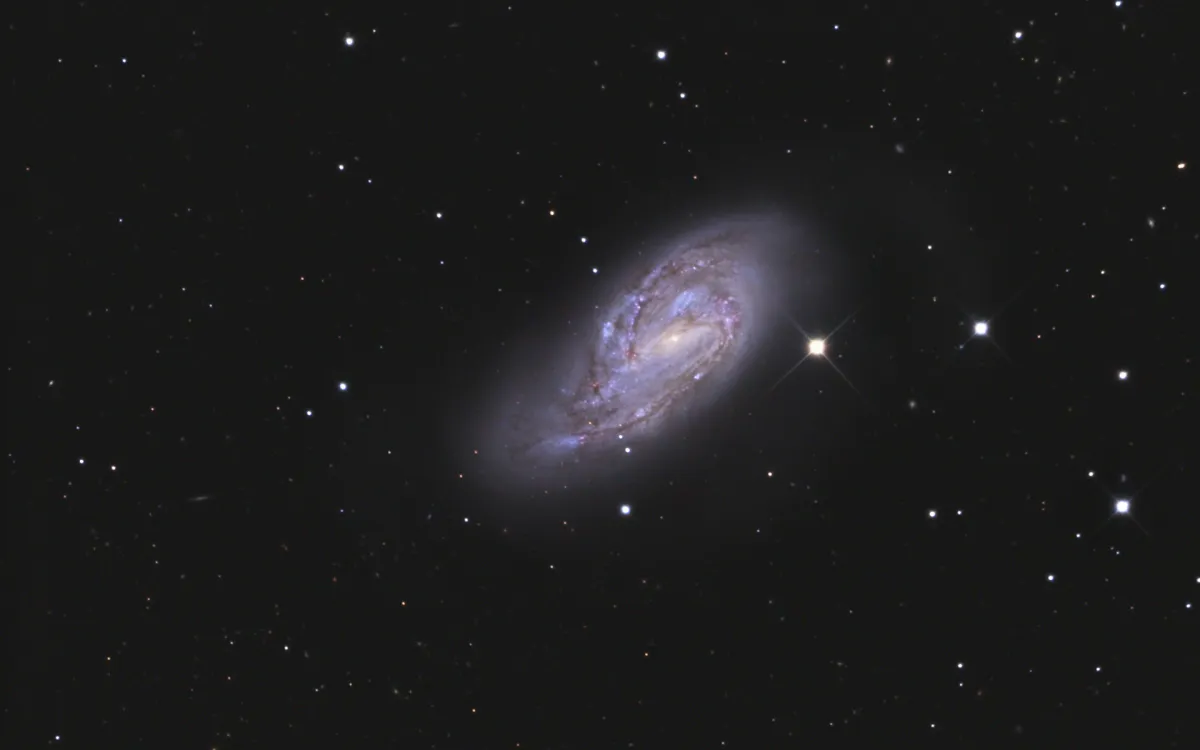
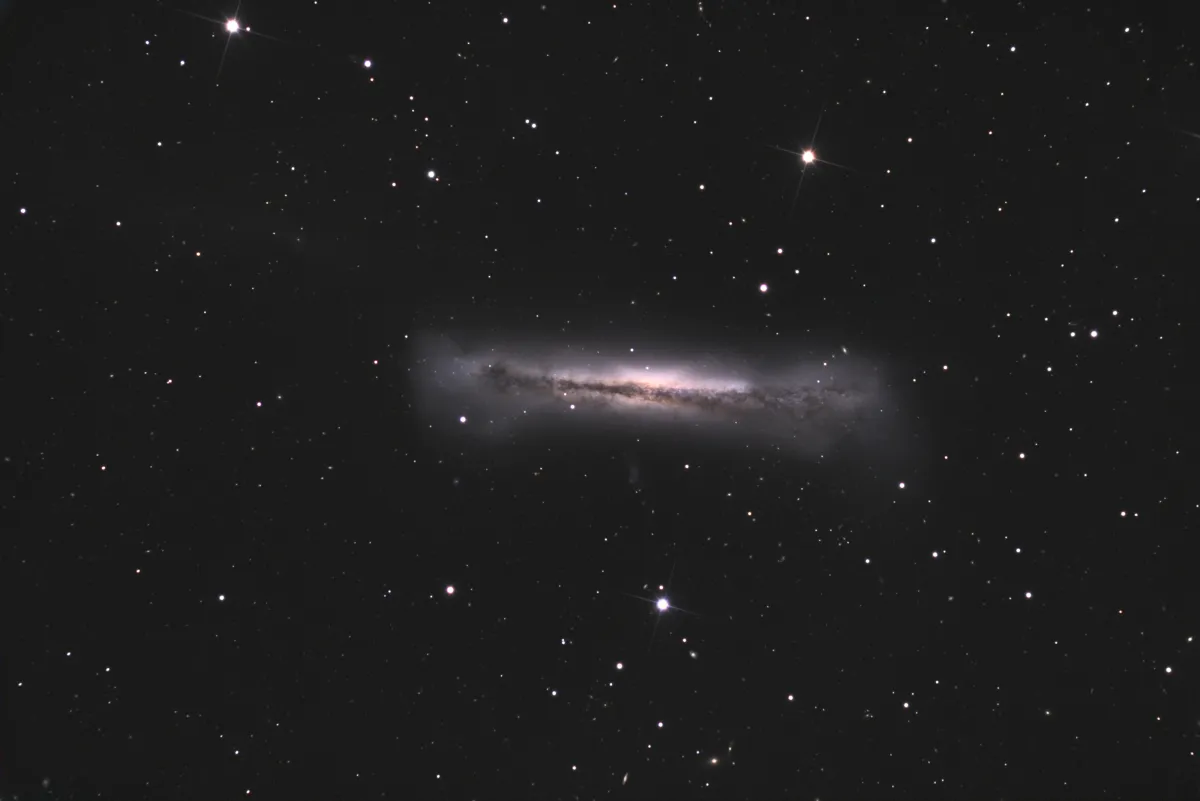
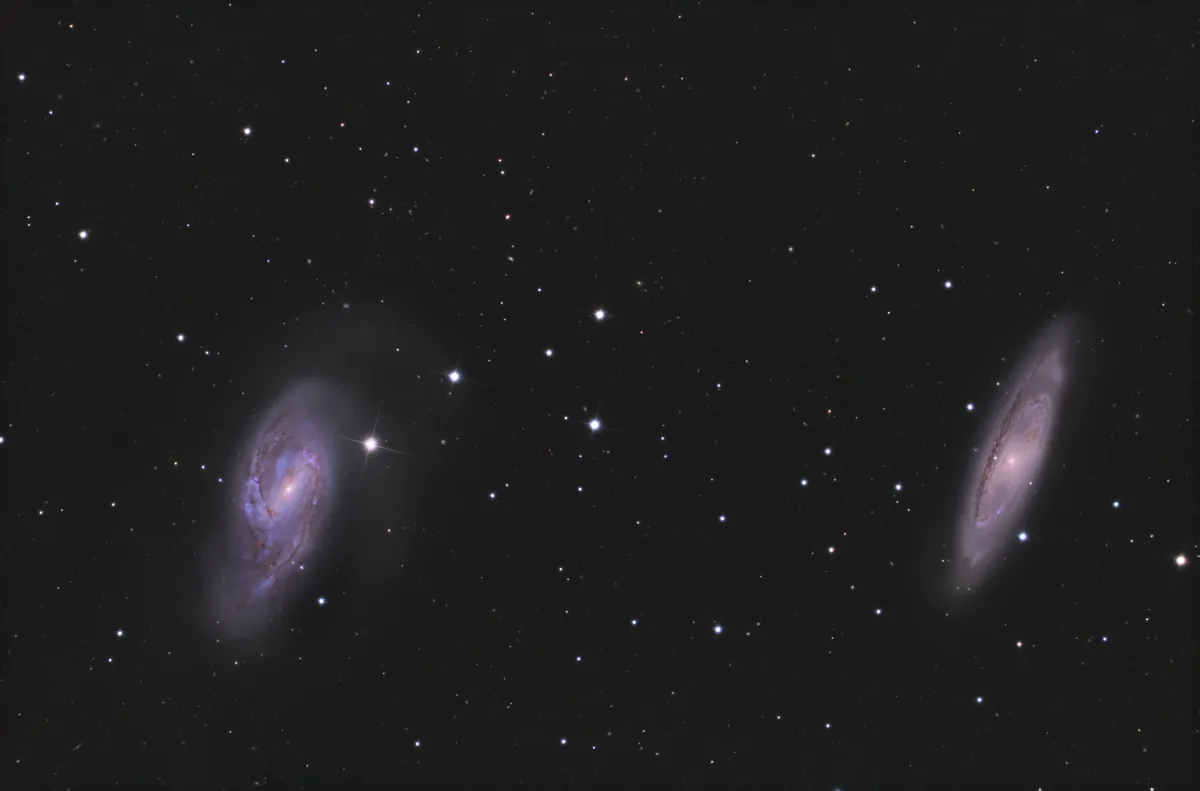

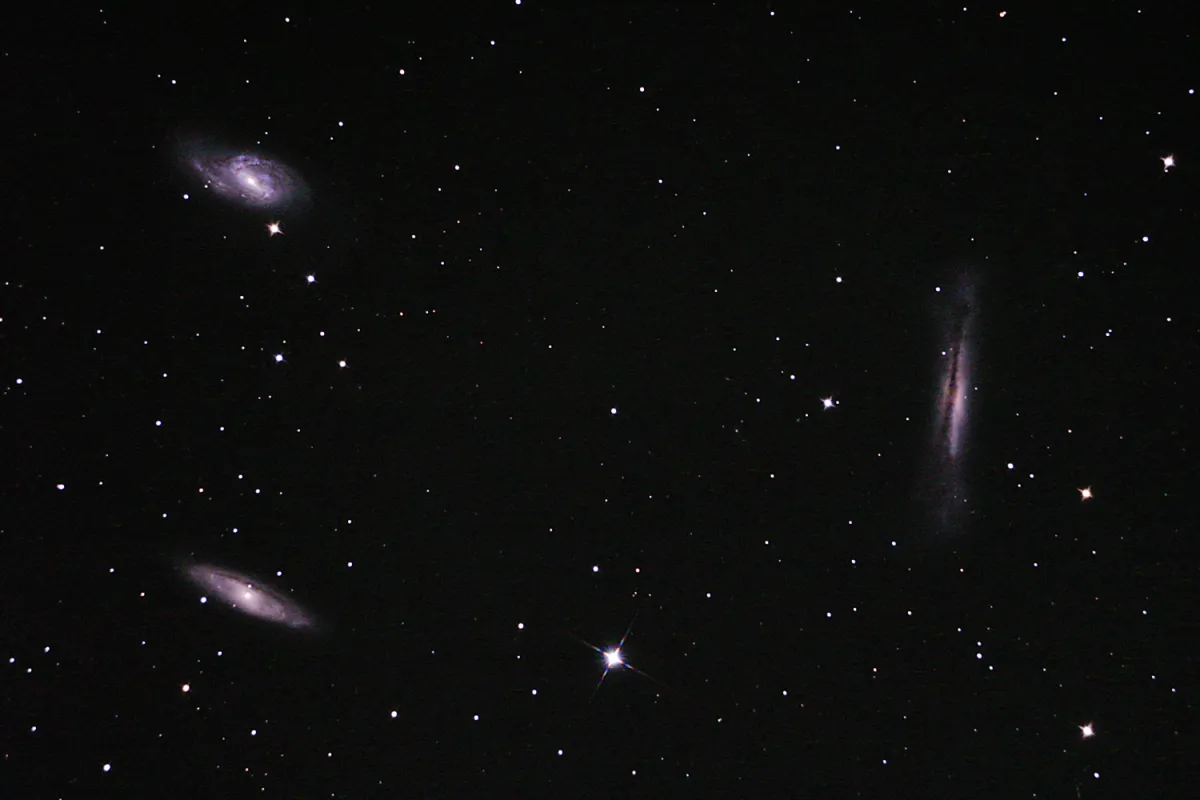
| Name | RA | Dec | Type | bMag | vMag | B-V | SB | Dim | PA | z | D(z) | MD | Dreyer Description | Identification, Remarks |
|---|---|---|---|---|---|---|---|---|---|---|---|---|---|---|
| NGC 3623 | 11 18 55.6 | +13 05 27 | Gx (Sa) | 10.3 | 9.3 | 1.0 | 12.8 | 9.8 × 2.9 | 174 | 0.002692 | 11.37 | 12.590 | B, vL, mE 165° ±, gbMBN | h 854; GC 2373; M 65; UGC 6328; MCG 2-29-18; IRAS 11163+1322; CGCG 67-54; VV 308; Arp 317 |
| NGC 3627 | 11 20 15.1 | +12 59 24 | Gx (Sb) | 9.7 | 8.9 | 0.8 | 12.7 | 9.1 × 4.1 | 173 | 0.002425 | 10.24 | 10.010 | B, vL, mE 150°, mbM, 2 st np | h 857=875; GC 2377; M 66; UGC 6346; MCG 2-29-19; Arp 16; CGCG 67-57; ARAK 288; VV 308; Arp 317 |
| NGC 3628 | 11 20 16.7 | +13 35 24 | Gx (Sb) | 10.3 | 9.5 | 0.8 | 13.4 | 13.1 × 3.1 | 104 | 0.002812 | 11.88 | 11.300 | pB, vL, vmE 102° | WH V 8; h 859; GC 2378; UGC 6350; MCG 2-29-20; CGCG 67-58; Arp 317; VV 308; IRAS 11176+1351 |
Quasars around Galaxy NGC 3628

Scientific work on the galaxy NGC 3628 and the gas surrounding it brought some quasars to light. A closer look at the image of the galaxy NGC 3628 in the constellation of Leo reveals not only the X-ray flag but also very distant quasars. Five quasars with a light transit time of approx. 7.4 to 10.5 GLy with a corresponding redshift can be made out around the galaxy NGC 3628. The record in the picture is held by Quasar Wee 52 with a z of 2.43 or a large redshift. [395]
Finder Chart
The galaxy group is located in the constellation Leo, roughly in the middle between the two stars Chertan (θ Leonis) and ι Leonis. The best observation time here is November to August.
Visual Observation
762 mm aperture: The visual impression can be reproduced with a MallinCam video camera and an integration time of around three seconds. A tracking 30" f/3.3 SlipStream Dobsonian was used. The resulting image comes very close to visual vision with a 13 mm Tele Vue Ethos eyepiece. — 14. 3. 2012, Eduard von Bergen
